stickhunter
CGN frequent flyer
- Location
- Victoria, B.C.
I think I answered my own question when I took these photos, but I thought I'd share for those interested.
I recently received a Long Branch No.4 Mk. 1* that was advertised as a DCRA 7.62 Nato conversion. I referenced the DCRA sticky on this forum and was comparing the pictures to what I had, and initially I was a bit puzzled as to whether my rifle was an authentic DCRA conversion. The reason for my skepticism was that both the barrel and bolt were (at first glance) poorly struck with the conversion number (1219) and, more importantly, I could see no conversion number or DCRA maple leaf struck on the receiver.
I disassembled the rifle so that I could get a better picture of the barrel stamp, and it was only when I was cropping the photos that I noticed the receiver was, in fact, stamped with the same conversion number (1219), although the stamp was well below the mid-line of the front receiver ring and completely hidden under the forearm wood.
So I think I'm in the clear about this being a genuine DCRA rifle, but the poor stamping, especially on the bolt handle where it looks to have been double-struck, and the hidden location of the receiver number, are something that I'd not seen before. The photos make the bolt stamp more legible than it is to the bare eye --- the '2' just looks like two peened marks.
What do you think -- authenticate? I didn't show a picture, but the barrel does have the CA 7.62 stamp near the muzzle and the rifle is in full military form with the addition of a sling swivel/king screw and 7.62 ejector.
Here are the pictures...
Double-struck DCRA conversion number on bolt handle (note British proof and matching serial number):
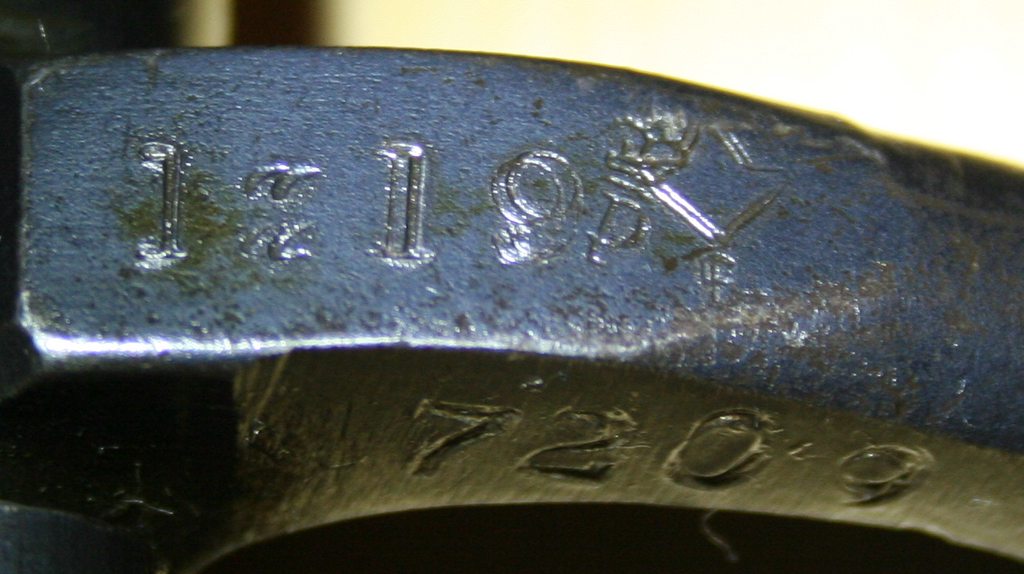
DCRA conversion number on right side of barrel and receiver ring (note the position of the receiver stamp in relation to the extractor cutout -- this is below the wood line):
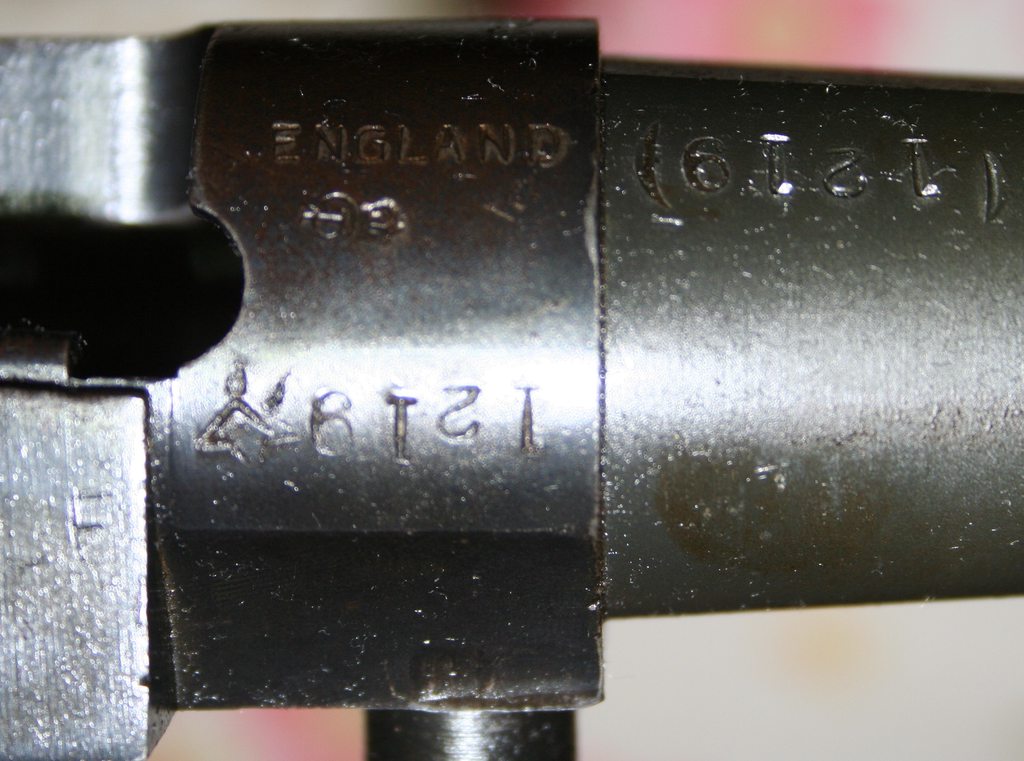
This is originally all that I saw looking down on the receiver:
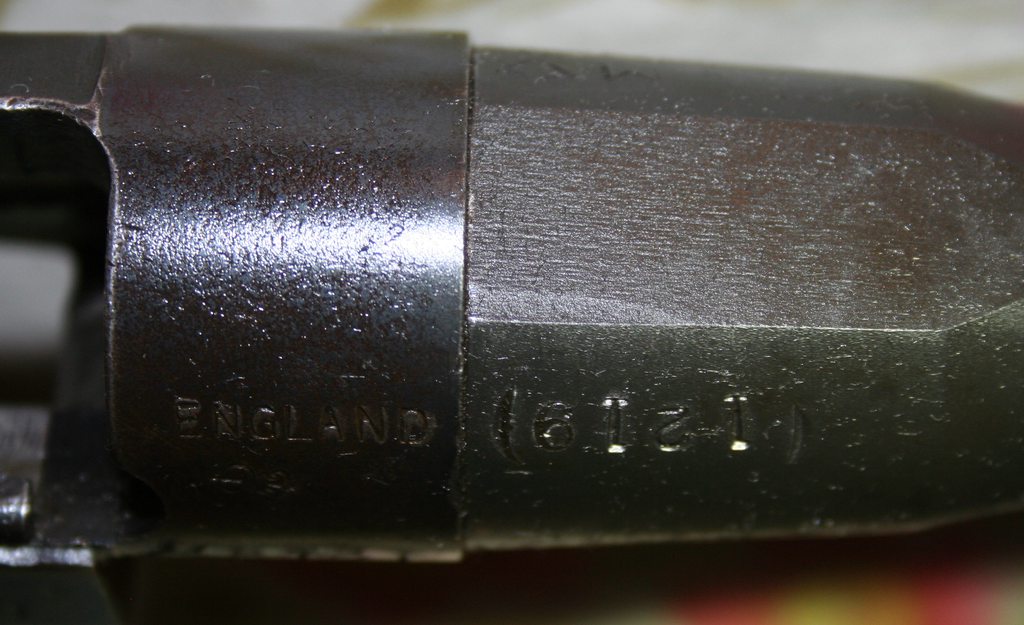
Barrel stamp on left side of barrel:
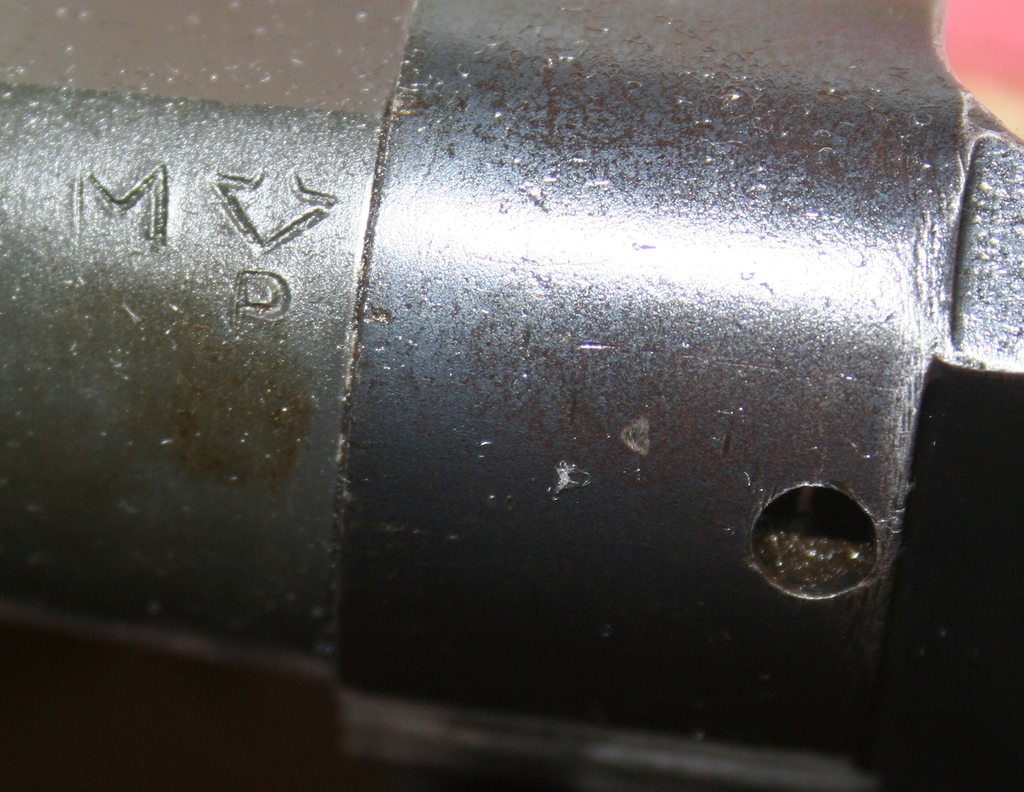
Receiver with 7.62 ejector screw installed:
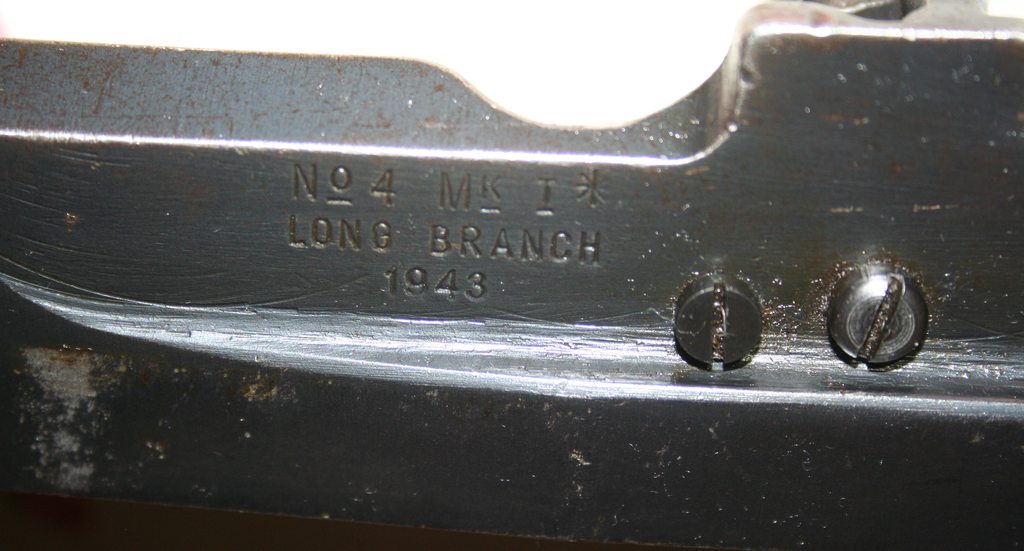
Serial number on wrist:
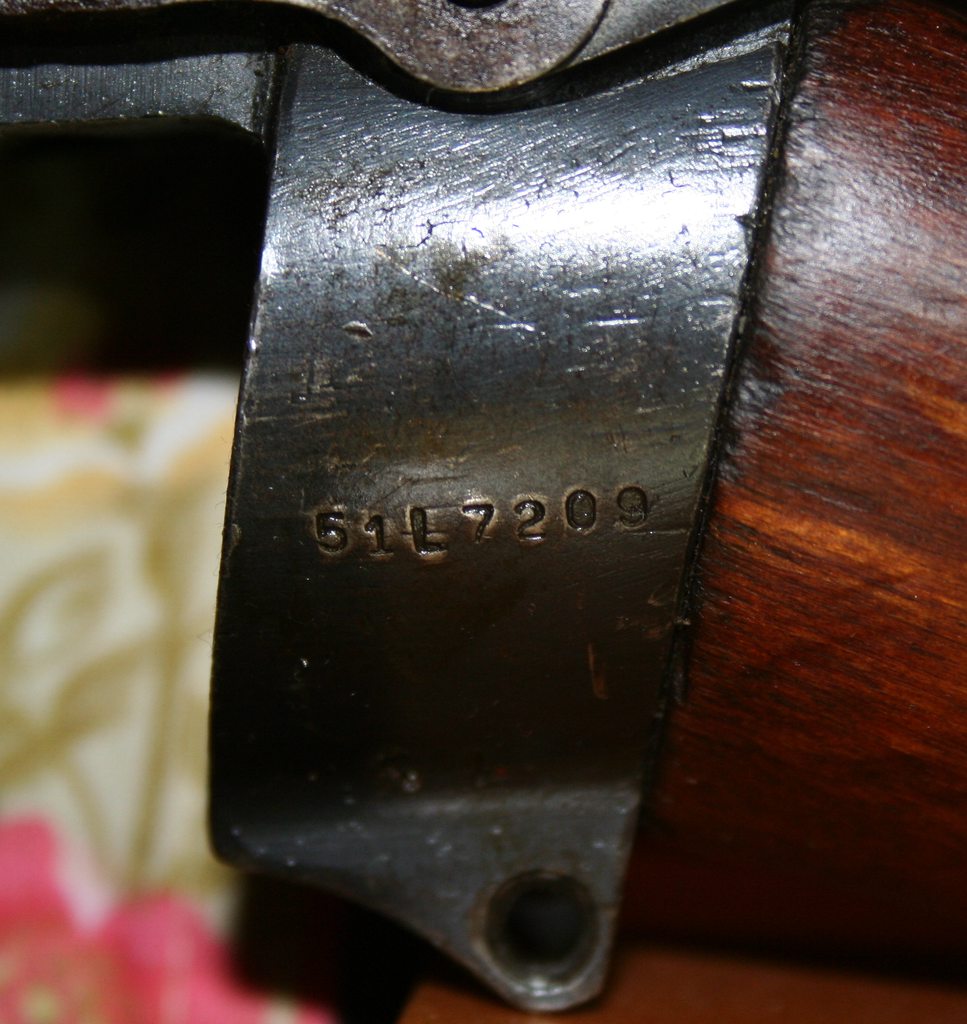
I recently received a Long Branch No.4 Mk. 1* that was advertised as a DCRA 7.62 Nato conversion. I referenced the DCRA sticky on this forum and was comparing the pictures to what I had, and initially I was a bit puzzled as to whether my rifle was an authentic DCRA conversion. The reason for my skepticism was that both the barrel and bolt were (at first glance) poorly struck with the conversion number (1219) and, more importantly, I could see no conversion number or DCRA maple leaf struck on the receiver.
I disassembled the rifle so that I could get a better picture of the barrel stamp, and it was only when I was cropping the photos that I noticed the receiver was, in fact, stamped with the same conversion number (1219), although the stamp was well below the mid-line of the front receiver ring and completely hidden under the forearm wood.
So I think I'm in the clear about this being a genuine DCRA rifle, but the poor stamping, especially on the bolt handle where it looks to have been double-struck, and the hidden location of the receiver number, are something that I'd not seen before. The photos make the bolt stamp more legible than it is to the bare eye --- the '2' just looks like two peened marks.
What do you think -- authenticate? I didn't show a picture, but the barrel does have the CA 7.62 stamp near the muzzle and the rifle is in full military form with the addition of a sling swivel/king screw and 7.62 ejector.
Here are the pictures...
Double-struck DCRA conversion number on bolt handle (note British proof and matching serial number):

DCRA conversion number on right side of barrel and receiver ring (note the position of the receiver stamp in relation to the extractor cutout -- this is below the wood line):

This is originally all that I saw looking down on the receiver:

Barrel stamp on left side of barrel:

Receiver with 7.62 ejector screw installed:

Serial number on wrist:

Last edited:






































































